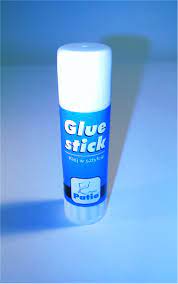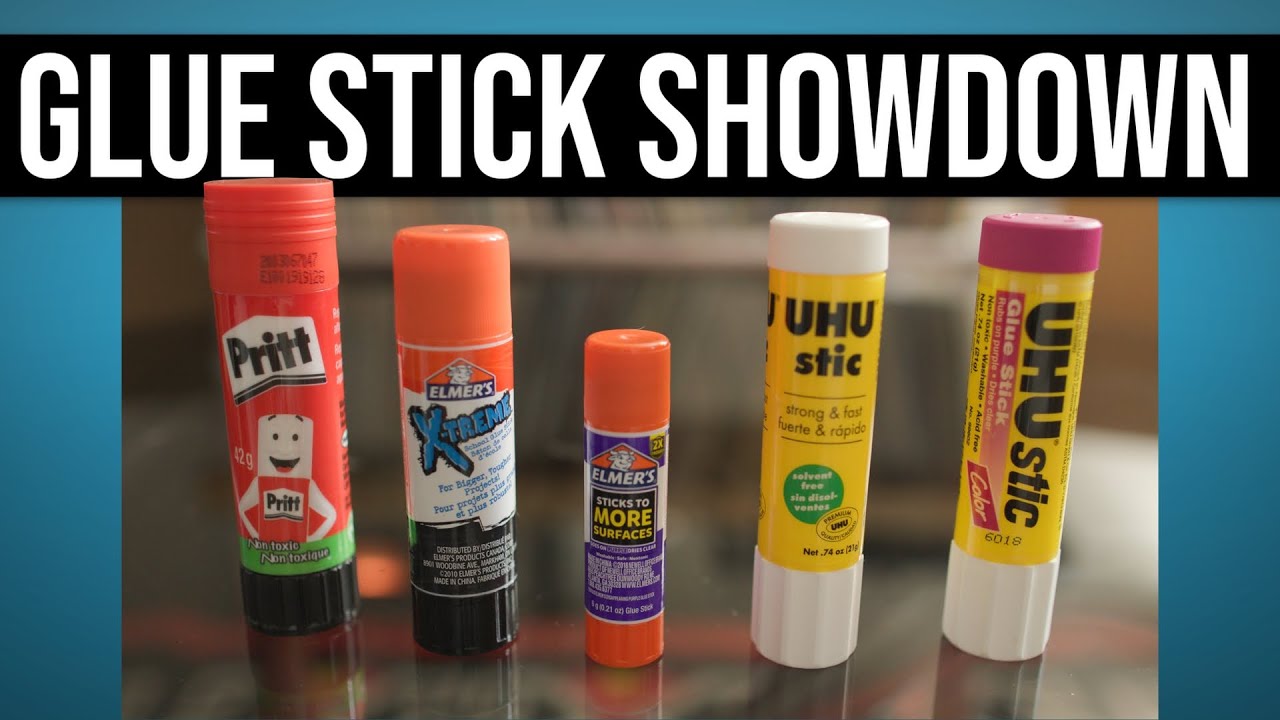What are glue sticks made of
Artists, crafters, and decorators can use glue sticks to help hold materials together. It can adhere items to various materials, including paper, fabric, metal, and wood. Most glue sticks work best when applied to a clean surface or roughened with sandpaper for better adhesion. A glue stick typically has a cylindrical shape and a flat round bottom.
It comes in different colours, but the most common is white. The actual glue inside the stick is solid and translucent. Depending on the specific brand and formulation, it may appear cloudy or clear. The glue inside the stick is usually made from water, synthetic polymers and other additives.
How do glue sticks work?
Glue sticks typically consist of water, synthetic polymers and additives. The adhesive molecules are so small that they cannot see even with a microscope. They stick to surfaces by being spread out over the surface. The glue is absorbed in tiny pockets on the surface to give it strength. It is popular among students, crafters, and office workers for various tasks such as paper crafts, scrapbooking, and attaching lightweight objects to paper and cardboard. Their ease of use and mess-free nature make them a convenient choice for many adhesive applications.

What are the benefits of glue sticks?
- Environment-friendly glue: Biodegradable and non-toxic glue sticks have no harmful environmental effects. It is not harmful to humans and animals.
- Portable: Glue sticks are lightweight, fast drying, versatile and easy to use. You can take it anywhere you want and use it as needed. It is a great choice for emergency purposes.
- Economic: Glue sticks are very economical. You can save a lot of money on other expensive adhesive substances. It is faster and easier. It also requires less effort and time to use it.
- Strong and durable: Glue sticks have strong and long-lasting adhesion. It is an excellent adhesive for home, office and school. You can choose the best one according to your requirements.
- Multifunctional: You can use glue sticks for arts and crafts projects, household items or school supplies. You can also use it to fasten items, such as tape.
- Waterproof: Glue sticks are waterproof and easy to use in different weather conditions. Even in wet weather, it can hold various objects together. You can also use it outdoors when there is no rain.
- Sticks instantly: Using glue sticks immediately by applying them directly to the surface without waiting is possible. It is a very convenient option for people who like quick and fast ways to solve their problems fast and efficiently. This is without wasting time.
- Clean up: You can easily clean it up after using it. It is an ideal choice for offices or at home where multiple tasks must be completed daily.
Are glue sticks toxic?
Glue sticks are generally non-toxic when used as intended. They are commonly made from safe materials like polyvinyl acetate or water-based adhesives. This makes them suitable for arts and crafts, school projects and general adhesion tasks. Preventing these scenarios and keeping glue out of your eyes is critical because accidental ingestion or inhalation can be dangerous.
As with any product, to ensure safe use, always follow the manufacturer’s instructions and supervise children when using glue sticks. It is better to contact emergency medical assistance immediately in case of an accident to check your condition and make sure no other life-threatening conditions are present.
How to use glue sticks properly?
- Use glue sticks under adult supervision: Adults should only use glue sticks who know their proper use. It is critical to pay more attention when using it with children.
- Use it in a ventilated area: Using glue sticks in an open place without a breeze is best for you. This is because the glue smell will be spread out in the air and may cause irritation to your eyes or skin.
- Clean area: The glue stick should always be applied to a clean surface to ensure optimal adhesion between the glued components. Avoid applying it to paper as it causes discolouration and faded paper colour.
- Remove all the excess: For maximum results, removing all excess glue stuck to any surface is suggested before applying adhesives to your object. It will help you avoid extra problems and complications during the application process.
- Clean your hands: After you finish using the glue stick, it is imperative that you clean your hands and any other items placed near where you were using the glue stick. Take a moment to completely clean off all dust and debris from your hands with soap.
- Never eat or drink near a glue stick: The glue itself is safe to use, but you should avoid any contact with food or drink that comes in contact with the glue stick. It is critical to clean off all glue sticks before food preparation. Never eat a meal after using a glue stick, as it may cause digestive problems.
- Store in a safe place: It is imperative to store glue sticks in a safe place where no one can access them without your permission.
Composition of glue sticks
Glue sticks are a popular type of adhesive commonly used for crafting, school projects, and various household applications. They comprise several components that work together to create an effective and easy-to-use adhesive. The main components of a typical glue stick include:
- Adhesive: The adhesive itself is the primary component of a glue stick. When applied, it is a solid, semi-solid, or gel-like substance that adheres to surfaces. Glue sticks use PVP (polyvinylpyrrolidone) or PVA (polyvinyl acetate).
- Wax: Glue sticks contain wax, which serves multiple purposes. The wax helps give the glue stick its solid form, making it easy to handle and apply. It also improves glue adhesion, making it stick better to surfaces.
- Resins: Resins are added to the adhesive to enhance strength and bonding properties. These resins improve the durability and longevity of the adhesive once it dries. It also improves the overall consistency and flexibility of the glue stick. Resins may also be added to prevent the stick from cracking as it dries.
- Fillers: Some glue sticks may contain fillers, such as calcium carbonate and talc, which improve the texture and consistency of the adhesive. It is also used to enhance the gloss of glue sticks.
- Colorants: Glue sticks are often available in different colours, and colourants are added to give them their distinctive appearance. The colourants are usually non-toxic and never affect the adhesive properties of the glue. It also prevents the adhesive from drying out too quickly.
- Stabilizers: Stabilizers prevent the glue stick from drying out too quickly or becoming excessively brittle. They help maintain adhesive usability and shelf life. It is critical to note that stabilizers may increase the amount of time glue takes to dry.
It is critical to note that different manufacturers may use different formulations and additives. However, these are the primary components of the majority of glue sticks. Glue sticks are generally considered safe and non-toxic for typical use. Still, it is always an excellent idea to read the product labels and follow the manufacturer’s safety instructions.

FAQs :
1. Is the glue stick plastic?
Glue sticks are typically made of thermoplastic, which is a type of plastic. It is made of polyvinyl acetate plastic, which provides adhesion and flexibility.
2. How to make glue sticks?
Glue sticks are simple to make. To do so, you only need to mix powder and plastic softener. The liquid adhesive will be obtained after that. By adding other components like waxes or fillers, manufacturers can customize the product for specific use areas.
3. What does a glue stick do?
Glue sticks are a sticky material used in arts and crafts. It contains polyvinyl acetate plastic, which helps the user create a strong bond on different materials and surfaces. It remains flexible over time.
4. Is glue stick safe?
Yes. Glue sticks are safe on paper, wood, plastic, ceramics and many other surfaces. It has low toxicity and environmental risks. However, care should be taken when applying it to children. It should always be used in a well-ventilated area and never ingested.
5. What is the main material of a glue stick?
The glue stick is polyvinyl acetate plastic, making it flexible, durable, and easy to apply.
Conclusion:
The common glue stick is a convenient and effective adhesive for various applications. It is easy to find and relatively inexpensive. Knowing how to apply glue sticks properly and understanding the risks involved before applying this adhesive is imperative. Various substances make glue sticks, including rubber, synthetic polymers, and natural latex.
They come in both liquid and solid forms and join items together. Glue sticks are a common material for crafts since they are available in various colours and sizes. Use it responsibly to avoid unnecessary problems. Always refer to product labels and follow manufacturer safety instructions.

Being associated with art and craft field since decades as a hobbyist and life long learner has given me an opportunity to learn many new things related to art, craft, paints and pottery which i am trying to share with your guys on this website. I have expertise of being professional painter and potter for the last 20+ years
I have learned mind blowing cool tips and insights which makes me a person with ability to improvise and come up with creative ideas and solutions to make stunning and impeccable art pieces of all types which are adored by people across the globe on this website and other platform.


